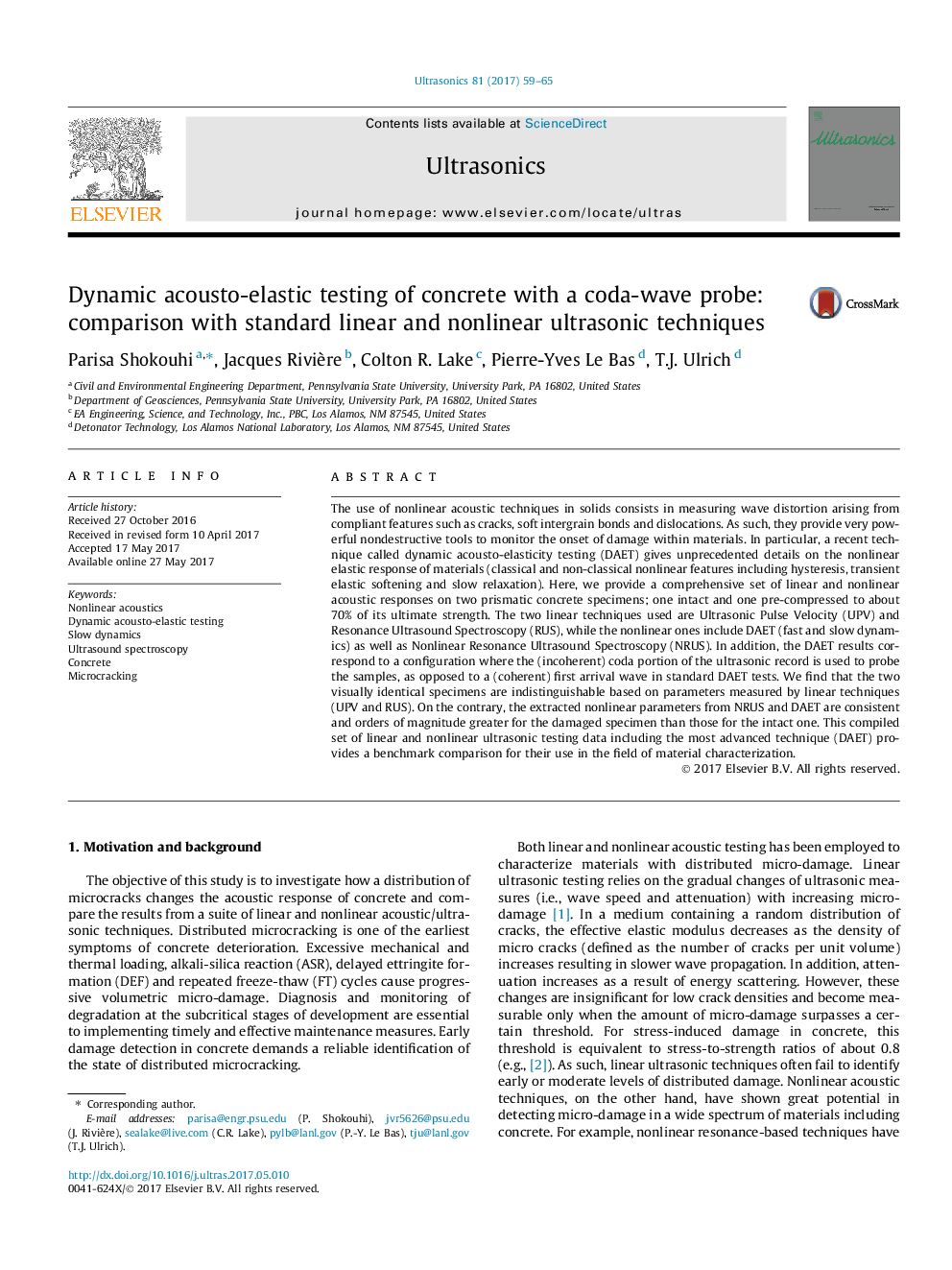| Article ID | Journal | Published Year | Pages | File Type |
|---|---|---|---|---|
| 5485394 | Ultrasonics | 2017 | 7 Pages |
Abstract
The use of nonlinear acoustic techniques in solids consists in measuring wave distortion arising from compliant features such as cracks, soft intergrain bonds and dislocations. As such, they provide very powerful nondestructive tools to monitor the onset of damage within materials. In particular, a recent technique called dynamic acousto-elasticity testing (DAET) gives unprecedented details on the nonlinear elastic response of materials (classical and non-classical nonlinear features including hysteresis, transient elastic softening and slow relaxation). Here, we provide a comprehensive set of linear and nonlinear acoustic responses on two prismatic concrete specimens; one intact and one pre-compressed to about 70% of its ultimate strength. The two linear techniques used are Ultrasonic Pulse Velocity (UPV) and Resonance Ultrasound Spectroscopy (RUS), while the nonlinear ones include DAET (fast and slow dynamics) as well as Nonlinear Resonance Ultrasound Spectroscopy (NRUS). In addition, the DAET results correspond to a configuration where the (incoherent) coda portion of the ultrasonic record is used to probe the samples, as opposed to a (coherent) first arrival wave in standard DAET tests. We find that the two visually identical specimens are indistinguishable based on parameters measured by linear techniques (UPV and RUS). On the contrary, the extracted nonlinear parameters from NRUS and DAET are consistent and orders of magnitude greater for the damaged specimen than those for the intact one. This compiled set of linear and nonlinear ultrasonic testing data including the most advanced technique (DAET) provides a benchmark comparison for their use in the field of material characterization.
Related Topics
Physical Sciences and Engineering
Physics and Astronomy
Acoustics and Ultrasonics
Authors
Parisa Shokouhi, Jacques Rivière, Colton R. Lake, Pierre-Yves Le Bas, T.J. Ulrich,
